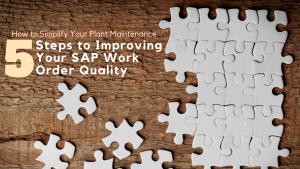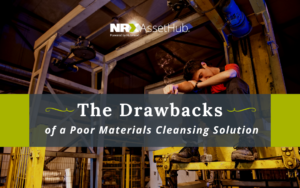For an asset-intensive business that deals with heavy equipment and machinery, routine maintenance checks and corrective repairs are a common part of an asset’s life cycle. However, these maintenance checks don’t simply happen on a whim. Requests for work can be generated automatically for preventive maintenance or by a person who notices something wrong with a piece of equipment for corrective work orders. The work then needs to be prioritized, planned, and scheduled before a worker is assigned to complete the work. From this brief overview of the process alone, you can see that the information for a work order must be passed through many hands before the work order is completed. So how does your EAM or CMMS system come into play, and how can it be helpful – or harmful – to the quality of your work orders?
Where your EAM or CMMS system comes into play
When a maintenance request occurs, the person making the request must be able to identify the asset that needs repairing in the EAM or CMMS system. If it isn’t easy to find the asset, they may create the request against the work area or even the plant. This can pose many challenges for businesses. When a maintenance planner plans maintenance or a maintenance worker completes the work, multiple different kinds of information must be recorded by them and loaded into their EAM or CMMS system. This can include a description of the problem, any parts required to complete the work order, the expected number of hours of work and completion date, the actual number of hours of work and completion date, and a checklist of tasks to be carried out. As a worker completes the work order, they are expected to document their work accurately and load it into the EAM or CMMS system. This may include information about the actual time worked and the details of what failed and why. This is important so that others can be informed about the repair history of the asset. Most importantly, work orders can also tell plant managers which assets tend to need maintenance more frequently, which assets tend to take longer to repair, and which assets are the costliest to maintain.
Unfortunately, just like any data in an EAM or CMMS system, work orders are prone to human error. If workers lose track of the number of hours spent on a work order, round numbers down so the task appears less costly on paper, or forget to add any special and important notes about the asset, this can seriously and negatively colour others’ perceptions of how their assets are managed. Without being able to trust work order data, senior level maintenance and reliability team members will have trouble making informed decisions about the best ways to improve the plant’s asset management.
What to do when your work orders aren’t working
If your EAM system has thousands of assets, that means it will likely have hundreds of thousands of work orders. The process of identifying areas of improvement and then actually creating actionable goals to improve asset reliability can seem overwhelming, but the returns of effectively analyzing your work orders could be significant in the long-term. To learn more about managing and analyzing your work orders, check out one of our resources below, or book a demo with us to discover how NRX’s work order analysis solution can help!
How to Simplify Your Plant Maintenance- 5 Steps to Improving Your SAP Work Order Quality
The Hidden Cost of Erroneous Work Orders: How Asset-Intensive Businesses can Save Millions and Free up 1000s of Hours of “Wrench Time”
The Drawbacks of a Poor Materials Cleansing Solution
Share this article




